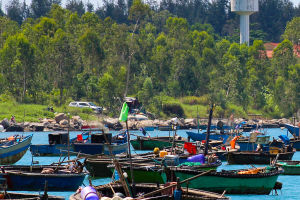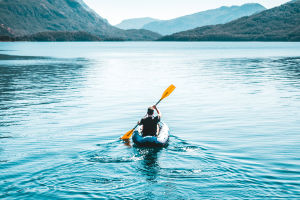For centuries, Étretat thrived on its fishing trade, with kelp commonly harvested and burned on the beach for its iodine. By the mid-19th century, the town saw a transformation as sea bathing gained popularity among the affluent.
Visitors and wealthy merchants from Paris and England began to arrive, leading to the development of villas. Writers and painters romanticized the seaside charm, turning Étretat into the renowned resort town it is today.
Getting to Étretat
By Car
Dear Lykkers! Driving is the easiest way to reach Étretat. Located approximately 3 hours from Paris and 1.5 hours from Rouen, it fits perfectly into Normandy itineraries. Parking can be a challenge during peak seasons, but arriving early increases the chances of finding a spot near the beach.
By Public Transport
Although direct trains to Étretat are unavailable, taking a train to Le Havre followed by a bus ride under an hour can get you there. Day trips from Paris are possible but might not provide enough time to fully enjoy the cliffs.
By Hiking
The adventurous can explore the Grande Randonnée 21 trail, a 190 km route from Le Havre to Le Tréport. This trail passes along the Alabaster Coast, offering breathtaking views of Étretat and beyond.
What to See
The Cliffs and Rock Formations
Étretat’s iconic cliffs, part of the Alabaster Coast, are a 140 km stretch of white chalk cliffs formed millions of years ago. These towering limestone giants, some reaching 90 meters high, have been shaped by natural forces like wind and tides. Notable formations include La Porte d’Aval and L’Aiguille, a striking 70-meter-high needle. Impressionist painters like Monet have immortalized these cliffs on canvas, capturing their beauty at different times of the day.
La Falaise d’Amont
To the right of the beach lies La Falaise d’Amont, also known as the “White Line Cliff.” This site features landmarks such as Les Jardins d’Étretat, a chapel, and the Monument L’oiseau Blanc. The grassy climb rewards visitors with panoramic views of the coastline.
La Porte d’Aval
On the left of the beach is La Porte d’Aval, a flint archway formed by an underground river. The nearby golf course provides changing perspectives of this impressive formation and L’Aiguille as you walk along the trail.
The Beach of Étretat
Étretat’s pebble beach, nestled between two cliff doors, is not only a stunning location but also essential for protecting the town from storm surges. Visitors are prohibited from removing pebbles to preserve this natural barrier.
Where to Eat
La Flottille
This cozy restaurant in the heart of town offers regional seafood specialties. Mussels are a popular dish here, with prices around EUR 13.50 for a generous 1kg bowl.
Le Lann-Bihoué
Renowned for combining Brittany and Normandy cuisines, this restaurant offers a variety of dishes, including traditional buckwheat crepes.
Le Romain d'Étretat
For those seeking a change from French cuisine, this pizzeria serves pizza, pasta, and charcuterie boards. Takeaway options allow for a relaxed meal on the beach.
Where to Stay
Les Tilleuls Étretat
Located in an 18th-century house, this tranquil retreat offers vintage décor and lush greenery. Despite being further from the beach, it provides a serene escape with a touch of French countryside charm.
La Villa 10
A short walk from the beach, this luxurious villa offers vibrant rooms with antique furnishings. Guests can enjoy wellness services such as saunas, massages, and yoga, making it a haven of relaxation.


